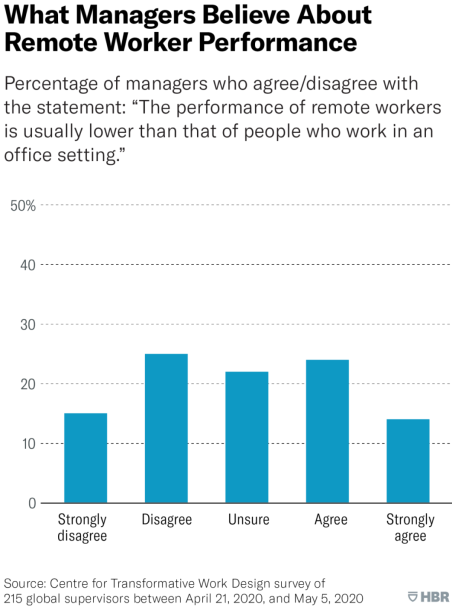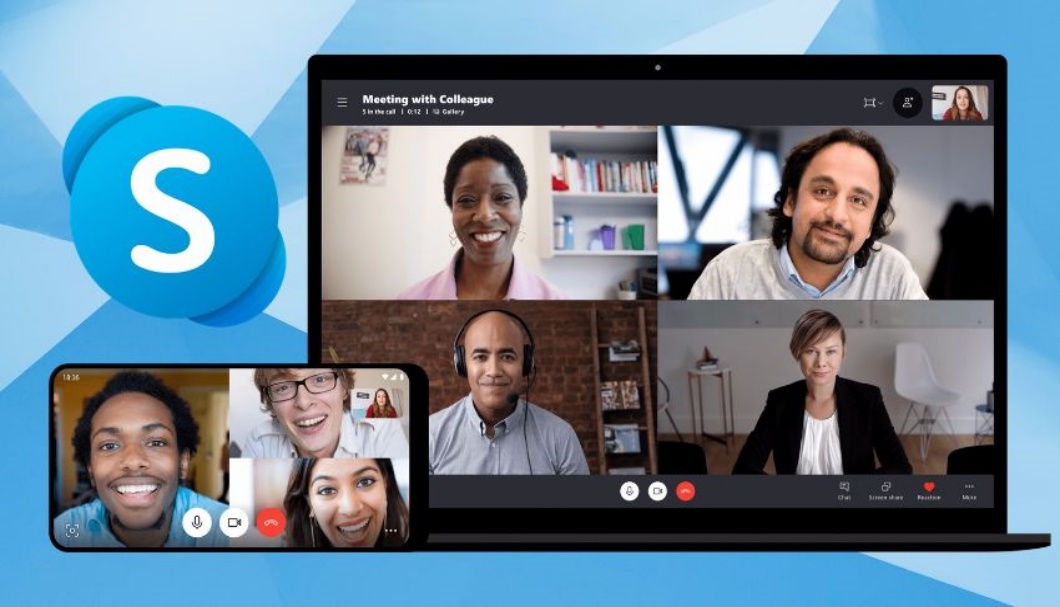Development team
How to Find and Manage an Offshore Software Development Team Effectively
For most IT leaders, offshore software development teams are no longer an unfamiliar model, but are even becoming en-vogue, yet before the global pandemic, as the way to quickly access a rich talent pool, solve technical problems or run projects smoothly and efficiently, etc. However, before deciding to hire an offshore development team, it is essential to understand how to manage remote employees and make this collaboration valuable as well as productive.
In this article, we cover perspectives associated with hiring and managing offshore teams, most importantly provide a comprehensive guide on how to manage offshore teams properly and effectively.
Table of Contents
1. Why go for an offshore development team?
Nowadays, the circumstances in which we work have changed dramatically. Remote working is the choice of many employees and they want to continue as such. The fact that 98% of the 3,500 global remote workers surveyed in The 2020 State of Remote Work expect to work remotely at least some of the time for the rest of their careers is one example of this trend.
Therefore, if businesses are generally used to the concept of working remotely, then why not opt to hire genuine professionals beyond borders to save costs, eliminate difficulties in recruiting local talents, etc. By hiring an offshore development team, undoubted advantages come to change your business beneficially.
Global talent with wider recruitment options
Access to a broader pool of talent is one of the key benefits of hiring offshore software engineering teams. Recruitment is no longer a story limited to a geographical area, but an opportunity that is open around the world.

Not only does this help solve the problem of local talent shortage, but it also makes it easier for the company to have a wide selection of talent, hiring the best professionals, regardless of their location.
Availability around the clock
In-house team combined with a team of offshore engineers will facilitate the process of extending your operational hour all day long. Working across time zones helps speed up projects, more jobs and tasks get done around the clock. Or even in some unfortunate server problems, no employee’s sleep will be interrupted when you already have someone always on set, thereby creating better emergency management.
Speaking of the collaboration between Microsoft’s team in the US and India on a project, Scott Berkun wrote in his book The Year Without Pants: “They worked the night shift while my team in Redmond worked days,” Berkun says. “If I planned well, we’d find magic in going to bed frustrated by a missing puzzle piece, and waking to find it in our inbox. It was like having a friend in the future.”
Operational and infrastructure cost savings
There will be differences in overall wages or hourly rates between professionals with similar qualifications but in different countries. Choosing to hire an outsourced development team in countries that are recognized as software development hubs such as China, India or Vietnam, etc. will give you the opportunity to work with well-experienced talents at lower prices.
Besides, it is undeniable that such remote working can help businesses save money on office space and facilities significantly. According to Global Workplace Analytics, average real estate savings with full-time telework is $10,000/employee/year. Not only that, working with offshore colleagues also helps to cut recruitment and payroll costs or reduce project development costs.

Diversity in techstacks of workforce
An offshore development team is undoubtedly the perfect complement to those development skills that are lacking in your internal team. Thus, helping to diversify your team’s technology stacks, while also providing an opportunity for the exchange and support of technology skills or experiences among members during project implementation.
This diversity helps in exploring a wide range of skills and expertise, also helps integrate different perspectives on projects, resulting in better solutions.
2. Common challenges in managing an offshore development team
Though managing teams remotely is perfectly viable, some of the established team management methods in the workplace may not fit well for a remote environment. Either way, managing an offshore software development team is not without its drawbacks due to the lack of face-to-face interaction.
Hence, it is essential that you identify some inevitable challenges of managing a remote team to make up feasible and practical solutions. Here’s some common challenges that you may encounter in leading an offshore team:
Challenges in communication
It’s much easier to be on the same page with your team as you are always in the same office or know each other well. But with teams who work remotely, this is not the case. The difference in time zones is the first cause of interrupted communication during work. An exchange message sent in the morning but may not get a response until late at night, or a casual video meeting call to identify system failures can be extremely early for one person but late for the other, if there is a large time difference.

Plus, if you are managing a global workforce, language and cultural differences can also present potential communication challenges. This can create barriers that interfere with how employees can communicate and interact with each other. For example, cultural differences in the meanings of basic words can sometimes lead to misunderstandings. With just one sentence “That’s not bad!”, others can understand it as “That’s good”, but for others, it is “That’s poor”. This is exacerbated by the fact that small misunderstandings and losses in this communication can lead to different results than expected.
Communication is always the key in all success, most especially, today due to the influence of the pandemic, face-to-face interaction is very difficult, therefore, understanding and respect in communication should receive even more attention. Those barriers, if not managed well, can easily lead to feelings of confusion and frustration, which do not easily foster open communication nor make the workflow efficient.
Challenges in collaboration and keeping track
Communication challenges inevitably lead to difficulties in team collaboration and workflow management. Even when working side-by-side in the office, employees still sometimes face difficulties in sharing knowledge and collaborating, so working remotely in a virtual environment is no exception or even more complicated. The Global Talent Trends report of LinkedIn found that top challenges of remote work are team bonding, collaboration and work oversight.
Full-time cooperation when running a project is a necessity, IT teams always need to exchange and share teamwork, otherwise this can become quite a challenge. Remote collaboration can also make it difficult to connect, keep track and share technical information in a timely manner, leading to disjointed team practices.

Trust issues
Besides communication, trust is also a factor that needs to be taken care of first. Geographical distance also creates a gap in trust among members.

The survey conducted during Covid-19 of Harvard Business Review pointed out that many managers sometimes struggle to trust that their employees are actually doing the job. Because of these doubts, managers can begin to raise unreasonable expectations that team members are always ready, ultimately disrupt work-life balance and cause a lot of tension, reducing employee motivation and further reducing productivity.
3. Best practices to successfully lead an offshore software development team
Managing an offshore team can be fraught with challenges but the benefits are fully deserved and indisputable. With this in mind, we assembled research-based practices for managers to successfully lead offshore development teams, thereby bridging the geographical distance and harmonizing between in-house teams and these workforce, making this collaboration effective and satisfactory.
Focusing on communication and collaboration
In fact, the challenges in communicating with teams of offshore developers can be easily dismantled, making good use of these suggestions will undoubtedly bring desirable benefits.
Schedule “golden hours” meetings
To solve the problem of time zone difference that interrupts communication and exchange, the first thing is that you shouldn’t worry much but must take advantage of it to be able to achieve “round the clock” efficiency.
Establish a suitable schedule with “golden hours” that will be convenient for both parties involved, including daily face-to-face meetings, weekly or monthly progress reports. And importantly, adhere strictly to scheduled meetings, avoid the cancellation of appointments and take notes or record meetings to make sure the others will not miss any information. In the event that you are unable to hold regular meetings due to lack of golden time, then make sure to maintain written communication via email or text on a daily basis and hold conference calls.
This way, you can promptly capture and resolve all bottlenecks as they arise, plus easily track work and productivity of teams. Taking advantage of these meetings so that members can freely communicate and share their thoughts, thus increasing engagement and connection.
Establish a common development culture:
The cultural diversity in the team will lead to many different ways of communicating and handling work. Therefore, to avoid unnecessary misunderstandings or conflicts, you must create a unified development environment. Accordingly, make sure members communicate clearly and in a variety of ways to keep conversations on track. Or set clear guidelines for sending reports or fixing bugs so that it would be easier for members to monitor issues, etc.
And most importantly, make sure there is no discrimination between your internal team and the remote team. Promote a culture of openness, fairness and transparency. Establishing a culture of trust is also a must to foster a quality of the relationships: trust between a team and the company that it works remotely for; trust between members and a leader; trust between one team member and another. According to Harvard Business Review, “studies have shown that trust can indeed be actively accelerated and maintained on virtual teams even when they have to be assembled on the fly with employees scattered across the globe.”
Leverage communication tools to foster collaboration
As for working beyond the border, without technology this is nearly impossible. Hence, there is no better way to collaborate and communicate with an offshore development team than leveraging the right tools. Here’s some great tools that can help your teams to have a seamless communication, make the best use of these!
- Text communication is also one of the most important communication methods for working remotely. Texts or messages can be easily searched and saved instantly, making your team communication smoother. Some great tools can be mentioned as Stack, Zoom, Skype, Google Hangouts, etc.
- For video or audio conferencing, some great tools are appreciated like Zoom, Skype, Google Hangouts, Microsoft Teams, ect. Video meetings using these tools will ensure better interaction and communication between members, significantly improve teamwork, and limit information interference when messaging.
- Besides, some other tools support project management such as Trello, Jira, Asana; Using Google Drive makes it possible for all documents to be shared and stored in one place; GitHub for code creation and reviews; WebWork Tracker for monitoring employee’s productivity, etc.

Not all of the tools above will be perfectly suited to managing your team. Take time to experiment and consider before making the most suitable choices. Then make sure to give your members clear instructions on how to use them for consistency and maximize the benefits of use.
Building a clear work procedures
Set priorities and objectives
Before starting work, specific and achievable goals need to be outlined. This is extremely important to ensure that everyone knows what they are aiming for at the end of the project. Thereby all team members have clear expectations of responsibility and commitment to the overall goals of the organization.
At the same time, in order to keep high productivity, besides the general objectives of the group, members also need to have clear personal objectives in the work process. As a manager, you have to do better in setting goals and development orientations for the whole team. Thus, offshore team management will be more efficient and smoother.
Ensure a clear assignment of responsibilities for each individual
In order for the teamwork process to be fair and favorable, the first prerequisite is to have a clear division of responsibilities and positions among team members. Avoid overlapping duties or abuse of power as this will inevitably cause work conflicts. Assign clear control and tasks to each team member based on their individual strengths and inclinations.
Build a process
There are many approaches to building an effective project management process in software development workflow (Waterfall, Scrum, Agile, Lean, etc.), you need to determine which is the best approach for your team’s performance. In which, Agile is adopted by most IT companies, refers to a software development approach based on iterative development.

The agile approach helps the team respond more quickly to project changes and handle them responsibly. With the Agile framework, project delivery speed will be accelerated, while improving product quality and ensuring on-time delivery on target.
Strong leadership and right talents
After all, the success of a project will be determined by people, so there should be serious and effective investment in the participants. This includes leadership qualities and talents involved in project development.
Mentoring than managing
A leader’s talent is a mirror of the team’s effectiveness and productivity. Managing a remote team is certainly not easy, but with an outstanding manager leading the team, the road to achievements is certainly not far away.
According to a recent report, 95% of IT leaders have focused more on listening to employees since Covid-19 began. “Listening to feedback from distributed teams and taking real-time action has never been more important.” – Qualtrics statement. In fact, even without a pandemic, it is extremely crucial to listen to the thoughts as well as acknowledge stress, employees’ anxieties or concerns.

Also empathizing with their struggles is the way to connect and inspire them to collaborate and contribute. As stated in the 2020 Global tech leadership study conducted by Deloitte, 54% of CIOs from leading tech companies agreed that empathy and emotional intelligence are valuable skills for collaboration and management.
Besides, be more flexible in managing the teams, presenting yourself as more of a mentor than a manager. As a result, it both creates a feeling of trust and respect as well as brings closeness to people you cannot meet face-to-face. Give them the encouragement and motivation to work from the people who lead them.
Hire talented offshore development team with right attitude and commitment
Make sure you learn about an offshore development team before making a decision to collaborate. They are talented engineers with a positive mindset? Are they responsible, enthusiastic and have a great work ethic? Can they align with company culture?, etc. Therefore set proper expectations even before the interview stage.
“The biggest challenge is finding people who are going to be self-starters who thrive well in a remote environment. When you’re together in an office you can do much more in-depth training and handholding but a remote team requires people who will speak up when they need help and keep their projects going” – says Megan Berry, VP of Product at Octane AI.
Prepare for interviews in a variety of ways to provide a preliminary assessment of the team’s potential. For instance, review feedback from former customers to find out if the quality of their work can meet your expectations; learn about the partner company that will provide you with an outsourced development team.
And nothing is more important than how you approach and ask questions during the interview process to unlock the potential of the candidate and assess their suitability for the project. After all, if you’ve decided to work with an offshore development team, trust them.
Recognition and rewards
Surely your employees will be more motivated and productive at work if they receive the recognition and praise they deserve for their dedication.

Bring positivity and start meetings with encouragement and reward for individual or team accomplishments over the course of the project. Even the smallest recognition can give remote workers a huge boost in morale, help relieve stress and difficulties, and create a greater sense of belonging. There are many ways for you to show your appreciation like giving away a team t-shirt or badge or even cash bonuses,… Believe or not this is an investment that never fails!
Closing thoughts
It is true that there will be challenges that come with managing an offshore software development team remotely, but fortunately these can be dismantled very easily. Just make sure you don’t miss out on any amazing benefits an offshore development team can offer for your business. Hopefully with those well-thought-out strategies for cultivating effective remote management practices we’ve written about above, you’ll be able to establish a healthy and productive collaboration with a great offshore development team.
And if you are ready to build your own team, we are more than happy to assist you here at Fram^. Our talented and dedicated developers are always ready to help you create perfect products. With years of solid industry experience and high expertise, our offshore development team has successfully partnered with many global technology companies to release mature products and generate great profits. Let’s collaborate today to thrive your business to the next level!


